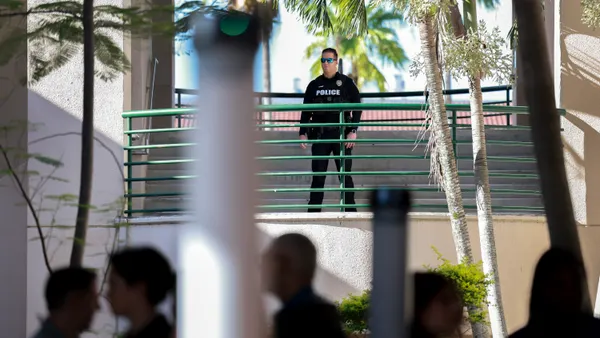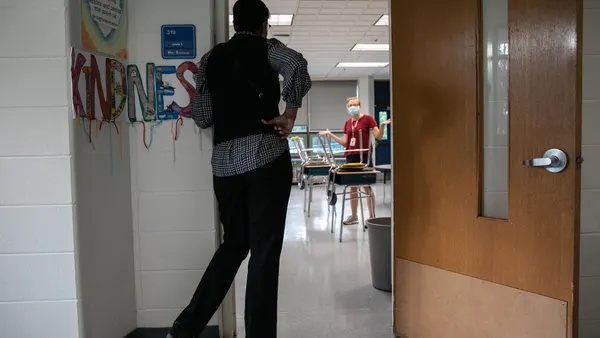Dive Brief:
- Strategies specific to middle schools — such as creating teams of teachers to foster positive relationships with students and training teachers to have effective communication with parents — can better help set tweens and teens up for success in high school and beyond, a paper from Chiefs for Change recommends.
- In offering recommendations on how to boost student academic, emotional and social development in middle school, the paper explains why approaches in middle school should differ from those in elementary and high schools due to the rapid neurological, learning, psychological and social changes children experience during this time.
- With the COVID-19 pandemic causing students of all ages to lose ground, some educators and researchers point to the urgency of targeting supports to middle schoolers so they recover from setbacks and prepare for successful transitions to high school and life beyond.
Dive Insight:
Supports for middle school students and teachers sometimes take a back seat to those for elementary schools, where foundational reading and math skills are taught, and high schools, where attention is focused on successful transitions to young adulthood, the report and education leaders said.
At the same time, parents can feel a loss of connection to their child's school during the middle years. That's because middle schools are more complex, tend to have more students per grade level, students have more teachers across subject areas, and teachers have more students, the report said.
Maria Vazquez, superintendent of Orange County Public Schools in Florida, which has 206,000 students and 38 middle schools, said several initiatives have grown out of the district's desire to increase academic, emotional and family-centered supports in middle schools. One is structured academic help before and after school and on Saturdays, Vazquez said. Another gives middle schoolers the opportunity to take advanced high school courses and earn high school credits toward graduation, she said.
The district also offers middle school parent academies that center on different topics, and has added coordinators who are focused on students' mental health and well-being, in addition to more social workers and counselors.
Middle school teachers in the district can receive coaching and in-person or virtual professional development. "We also have scheduled planning that allows teachers to share best practices and model lessons there as well," Vazquez said.
Chiefs for Change developed the report and recommendations after working with Hamilton County Schools in Chattanooga, Tennessee, on improvements to its middle school program. Last year, a joint Chiefs for Change-Hamilton team reviewed the 45,000-student school system's operations and developed districtwide and middle school-specific strategic priorities.
The report outlines steps taken in Hamilton County and ones other district leaders could consider adopting, including:
- Review research and talk to stakeholders. Through interviews with principals, community superintendents and others, the Hamilton team gained a better understanding of the context and needs of the district as a whole.
- Set a vision that is specific to middle schools. Team members developed middle school strategies based on their research. For instance, a district priority for hiring “great teachers” was adapted at the middle school level and specified the hiring educators with middle school experience and making sure those teachers had access to research about adolescent development.
- Analyze middle school performance data. To set a baseline for tracking trends, it is crucial to gather and use information about middle school student well-being, academic achievement, teacher attrition, community engagement and more. This data can also reveal promising practices to be replicated, as well as areas for growth.
- Set priorities and specific initiatives at school and district levels. For example, if a goal is to have staff who are passionate about working with middle schoolers and who have relevant certifications, an initiative could include dedicated professional development for middle school teachers.
- Establish grant programs to elevate promising initiatives. A transparent and supportive multi-round grant program can spark innovative approaches or provide additional resources to proven practices.













